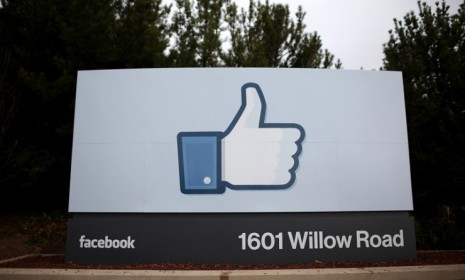Does Facebook need a 'want' button?
The social network seeks to capitalize on users' desires with a controversial new click that could help Facebook monetize its massive membership

Since it launched two years ago, Facebook's "like" button — the one that now appears nearly everywhere you look on the internet — has been a resounding success. The social network boasts that over 1.13 trillion of the little blue thumb icons have been clicked since the feature made its debut as part of Facebook's Open Graph platform, giving the company's data team access to a massive trove of consumer tastes and preferences. Now according to Reuters, Mark Zuckerberg and his cohorts are testing a "want" button as Facebook looks to extend its revenue streams beyond advertising. But will the social network's notoriously resistant-to-change users take kindly to the new feature? Here's what you should know:
How would the "want" button work?
It would be placed next to images of home furnishings, clothing, and other retail products that consumers, well, want, allowing them to create wish lists, says Alex Oreskovic at Reuters. For these initial stages, Facebook is testing the new button with seven retailers, including Pottery Barn and Victoria's Secret. "People will be able to engage with these collections and share things they are interested in with their friends," Facebook said in a statement. "People can click through and buy these items off of Facebook." Facebook is calling the new feature Collections, and is currently testing buttons for "want," "like," and "collect" to see which triggers the most desirable results (although it's reportedly set on "want"). Whenever a user clicks one of these buttons, that item would then show up in their News Feed for their friends to see — and maybe even click on themselves.
The Week
Escape your echo chamber. Get the facts behind the news, plus analysis from multiple perspectives.

Sign up for The Week's Free Newsletters
From our morning news briefing to a weekly Good News Newsletter, get the best of The Week delivered directly to your inbox.
From our morning news briefing to a weekly Good News Newsletter, get the best of The Week delivered directly to your inbox.
Why a new button?
The social network wants to capitalize on its 1 billion-plus users, and moving into e-commerce would put the company in direct competition with rivals like Amazon. Though actual rates weren't disclosed, Facebook could presumably take a cut from any purchases made through this feature if users follows through on their demonstrated "wants." "E-commerce is one of the best ways to monetize the internet," analyst Colin Sebastian of Robert W. Baird tells Reuters. "Thinking about how large they are as a platform and how engaged people are, there are lots of levers they haven't pulled yet in terms of monetization."
Is it really a good idea?
Facebook needs to please its investors, who have been wary of the site's financial prospects ever since its stock prices began plummeting after its initial public offering. Moving into e-commerce may just appease Wall Street. Users, however, might not take very kindly to it, says Matt Miller at Forbes. A "want" button would be a "fundamental change in the atmosphere of the site." Users go to Facebook to "feel like individuals" — "we don't want to feel like a dollar sign."
A free daily email with the biggest news stories of the day – and the best features from TheWeek.com
Sources: Daily Tech, Forbes, PC Mag, Reuters
-
 Ex-FBI agents sue Patel over protest firing
Ex-FBI agents sue Patel over protest firingspeed read The former FBI agents were fired for kneeling during a 2020 racial justice protest for ‘apolitical tactical reasons’
-
 The real tragedy that inspired ‘Hamlet,’ the life of a pingpong prodigy and the third ‘Avatar’ adventure in December movies
The real tragedy that inspired ‘Hamlet,’ the life of a pingpong prodigy and the third ‘Avatar’ adventure in December moviesThe Week Recommends This month’s new releases include ‘Hamnet,’ ‘Marty Supreme’ and ‘Avatar: Fire and Ash’
-
 ‘These moves would usher in a future of chemical leaks’
‘These moves would usher in a future of chemical leaks’Instant Opinion Opinion, comment and editorials of the day